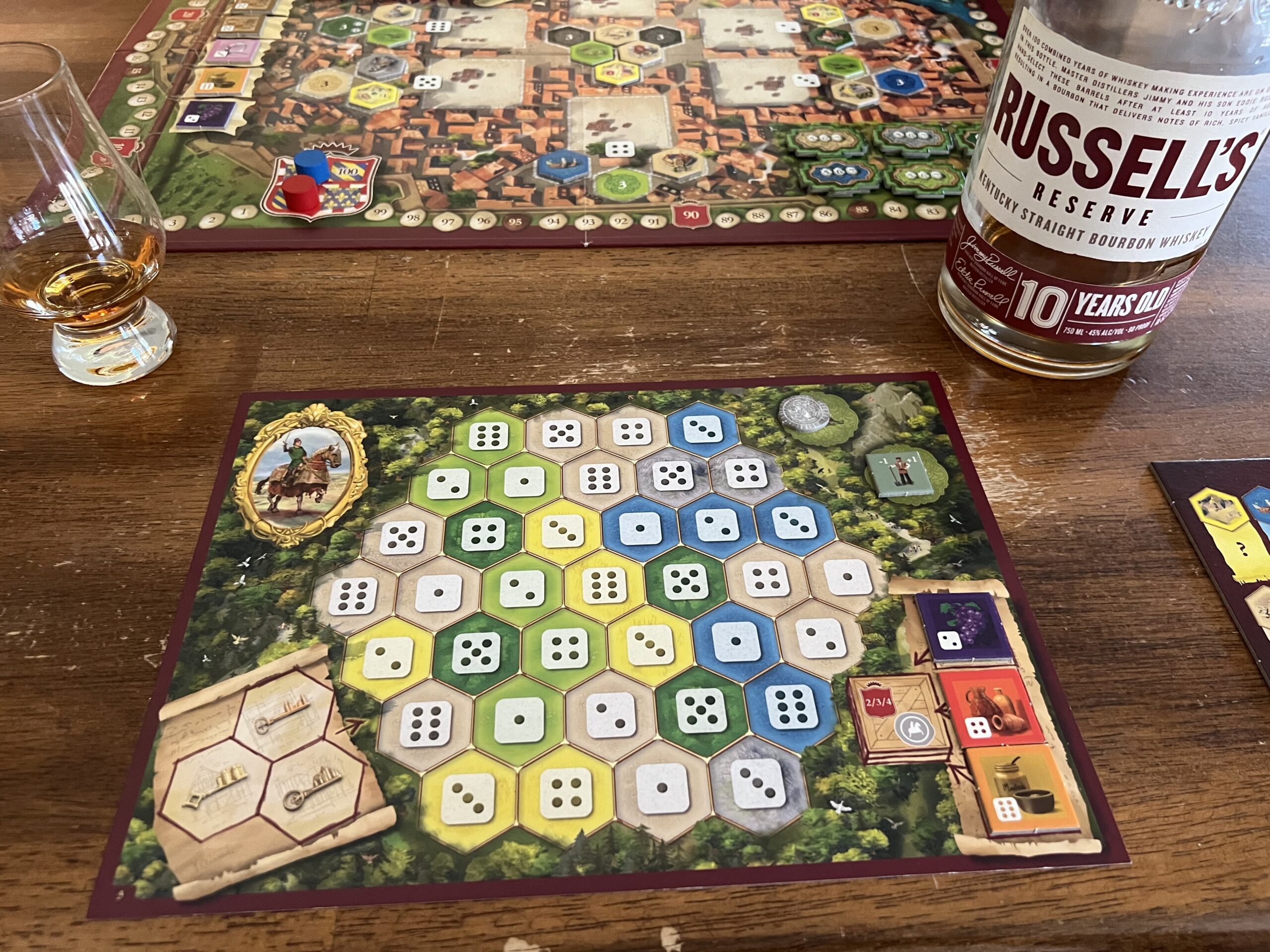For my pairing this month, I want to return to focusing on value. I aim to bring together a whiskey and a game that go beyond what their price point indicates they should. Because who doesn’t love good value? Beyond that, though, I wanted to pair the experiences as well – crowd pleasers that leave you with a good time, without asking too much of you. If that sounds good to you, read on.

The Pairing: Russell’s Reserve 10-Year and Castles of Burgundy
The Whiskey: Russell’s Reserve 10-Year
The Russell name is practically royalty in bourbon, so I’m not bringing anyone a bourbon they haven’t heard of. Even with the fame, however, I think some of their offerings are underappreciated. I’ll start this one off with a strong statement: I think Russell’s Reserve 10-Year is one of the best values in bourbon. Where I am, I can regularly get this bottle for $35 or so. A 10-year age statement being available for less than $40 is phenomenal value by itself, but the whiskey goes well beyond the age statement. The nose on this is like marshmallow cream and toffee, straight up. I don’t think I’ve smelled marshmallow so strongly on a bourbon before, but it’s clear here and I love it. The palate follows through with the toffee and adds some sweet chocolate and caramel, along with a little oak to be expected on a 10-year-old bourbon. The finish is long and pleasant, pulling the particular note of caramel out and keeping that touch of oak. If I had any criticism, it would be the 90 proof not enhancing the flavors as much as a higher proof version would, but this is so good as it is, that it’s forgivable.
The Game: Castles of Burgundy
A favorite of my wife’s, this was one of my first loves in board gaming, and one I come back to regularly. In Castles of Burgundy, you play as French nobles in the middle ages developing your duchy by adding various building types, such as castles, ports, mines, or castles. That’s interesting enough, but it’s the way this translates to gameplay that makes the game shine. Castles of Burgundy is a dice action game, which means that your dice rolls determine what actions you can take each round. Every building is randomly assigned a value throughout the game, and you have to roll that building’s value to be able to place it in your duchy (territory). This might sound frustrating on its face, but there are many ways to mitigate the luck of the dice, and a good player will create a steady source of this mitigation. Each building also has powers that are activated as you place them in your duchy, which can often lead to a chain of actions from one building placement that is incredibly satisfying to pull off. The game is on the lighter side, can be played in under an hour with people familiar, yet it packs loads of crunchy decisions. A classic, in my mind.


The Final Pairing:
I brought these two together because of how I view them both: great values that bring way more satisfaction than their price and presentation would suggest. I will always celebrate value where I find it, and these are great examples. Beyond value, though, there are certain characteristics that pair well together – both carry flavors or mechanics that are well-integrated and flow smoothly; both can be greatly enjoyed without being overwhelming, and frankly, enjoying these two together creates a great time.
Cheers and happy gaming!




